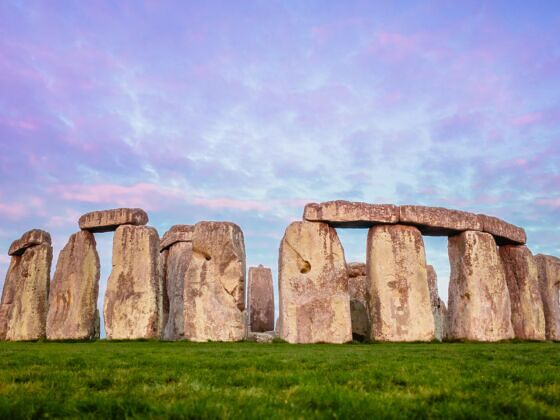If you watched every documentary, listened to every podcast, and read every book about Stonehenge, there’s a good chance that you’d finish more confused about its meaning than when you started. The History Channel’s Ancient Aliens episode will give you a much different set of information than the BBC’s “Stonehenge: The Lost Circle Revealed” after all.

Researchers Believe They Finally Can Answer Why Stonehenge Was Built
But now researchers claim they’ve found the real reason why Stonehenge was built: It’s a calendar. And while it’s long been understood that the rock formation helped mark the seasons for ceremonial reasons, this new study points to the idea that it actually marked a much more specific timeline.
“The clear solstitial alignment of Stonehenge has prompted people to suggest that the site included some kind of calendar since the antiquarian William Stukeley,” Professor Darvill, from Bournemouth University, said in a statement. “Now, discoveries brought the issue into sharper focus and indicate the site was a calendar based on a tropical solar year of 365.25 days.”
The arrangement let the people of what is now known as England’s county of Wiltshire know what day it is based on a solar calendar year. The new research suggests that the days weren’t all that different from the calendar we know today, either. The ancient residents had a year of 365.25 days with the stones acting as a physical representation of the time passed.
The 30 stones in the circle (called the sarsen circle) each represent a day in a month. Each month had three weeks with 10 days. Like in the modern era, the ancients had a balancing period to account for the fraction of a day every year. Whereas we have leap year with an extra day, the people who used Stonehenge had a short month that was five days long and a leap day every four years. These extra days are called intercalary days, and the new research posits that the center five trilithons (two upright stones with a stone balanced on top) were dedicated to deities.
The remarkable sight of the winter and summer solstices landing on the same pair of stones each year is in part due to the builders recognizing the need for a leap year. The solstices would also serve as a check on the record keeping since it always hit in the same place.
The study notes that this method of calendar keeping could have been created by the local people without help. It also could have come from travelers from elsewhere (though still from Earth), as civilizations in the eastern Mediterranean and Egypt used a similar date keeping method.
If Stonehenge wasn’t already on your must-visit list, maybe this new understanding will spark interest (just don’t be like that guy who took a piece of Stonehenge as a souvenir for 60 years).
“Finding a solar calendar represented in the architecture of Stonehenge opens up a whole new way of seeing the monument as a place for the living,” Darvill said. “A place where the timing of ceremonies and festivals was connected to the very fabric of the universe and celestial movements in the heavens.”